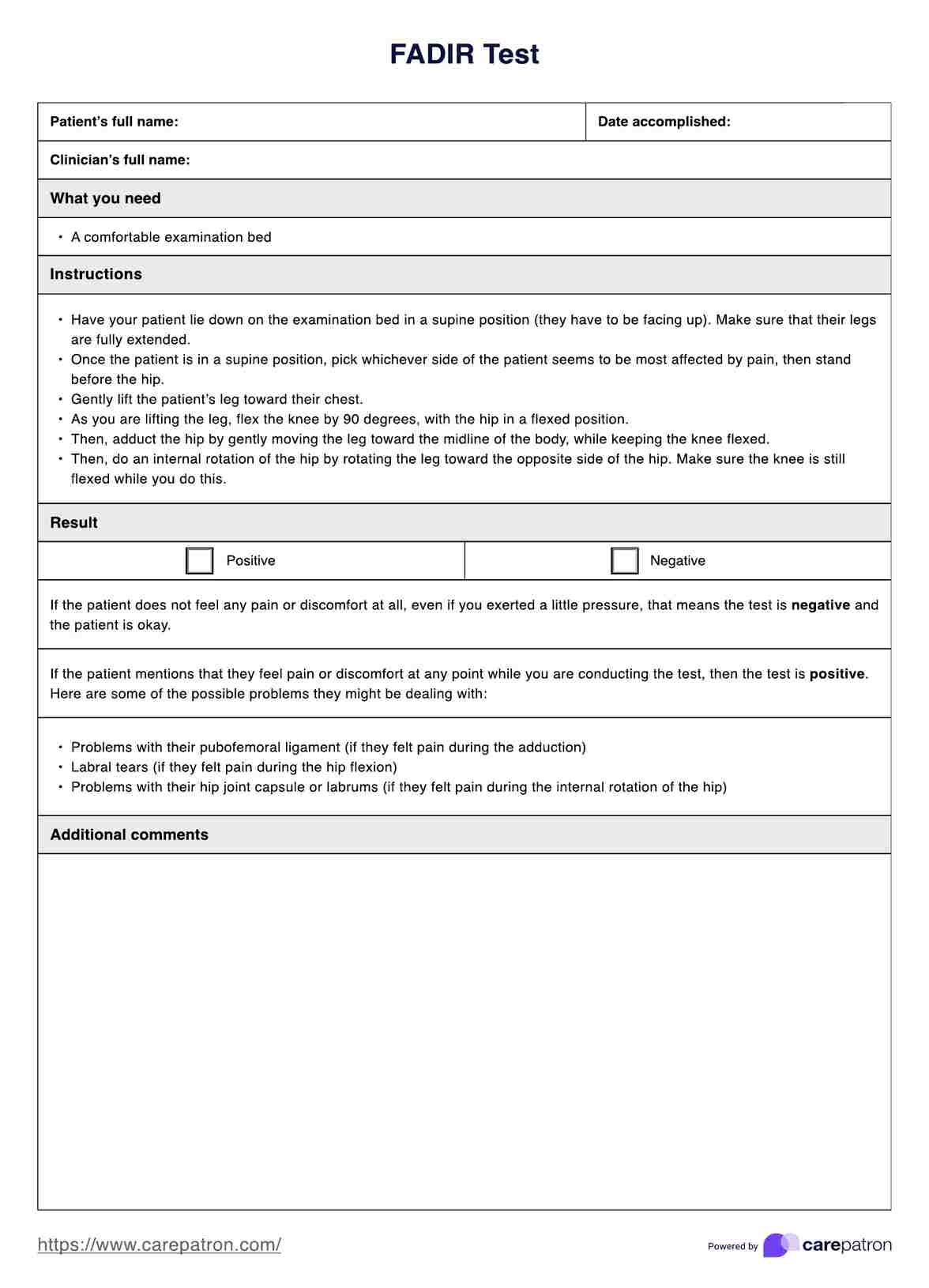No. It’s highly recommended that you include the FADIR Test as part of a more comprehensive examination that includes other tests. This is so you can cover all possible bases and you have enough results even from other tests to confirm possible issues that you suspect a patient of having based on the FADIR Test results.

FADIR Test
If you have a patient who is complaining about pains in their hip, conduct the FADIR Test to assess their potential condition. Are they dealing with a labral tear? Or perhaps a hip impingement? You’ll be able to get to the bottom of things by conducting this test!
FADIR Test Template
Commonly asked questions
That depends on the patient. Whatever pain a patient feels while the professional is performing this examination technique will come from the issues they’ve been dealing with prior to setting an appointment with you. In the context of the test, the pain is good only because it will help professionals locate where exactly in the hip is the pain coming from.
Aside from causing mild discomfort because of its nature, the FADIR Test is generally not risky. If a greenhorn or a non-professional is conducting it, then that’s the time it becomes risky because they don’t have the experience and the know-how to properly conduct the technique. They might end up aggravating the problem. That’s why it’s best for highly trained and experienced professionals to conduct this.
EHR and practice management software
Get started for free
*No credit card required
Free
$0/usd
Unlimited clients
Telehealth
1GB of storage
Client portal text
Automated billing and online payments











